Kind of a Big Deal: How King Kong Measures Up (Images)
Standing tall

King Kong, the giant movie ape that first terrorized New York City in the film "King Kong" (RKO Pictures, 1933), gets a new origin story in "Kong: Skull Island" (Warner Bros., 2017). His height has fluctuated from movie to movie over the years — in his latest film, Kong stands 100 feet (31 meters) tall. But how does he measure up against some of the biggest animals on Earth — living and extinct? [Read more about why King Kong towers over today's beasts]
King Kong (2017)
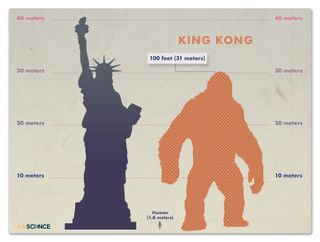
King Kong (according to "Kong: Skull Island," 2017): 100 feet (31 meters) tall.
Patagonian titanosaur

Patagonian titanosaur (unnamed): 66 feet tall (20 meters), 130 feet (40 meters) long, estimated weight of 85 tons (77 metric tons). It is one of the largest known animals that ever lived. This individual was found in Argentina and belongs to a group of giant herbivorous dinosaurs called sauropods that lived 136 million to 66 million years ago.
Blue whale
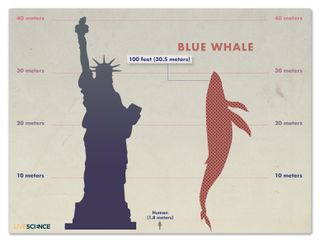
Blue whale (Balaenoptera musculus): 100 feet (30.5 meters) in length, weight about 400,000 pounds (181,437 kilograms). They are found in all of the world’s oceans.
Megalodon
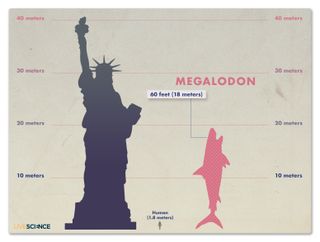
Megalodon (Carcharocles megalodon): 60 feet (18 meters) in length, weighed up to 110 tons (100 metric tons). This enormous shark lived in oceans around the world 15.9 million to 2.6 million years ago.
Livyatan
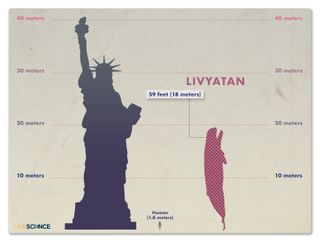
Livyatan (Livyatan melvillei): 59 feet (18 meters) in length. A relative of modern toothed whales, livyatan lived about 12 million years ago, went extinct about 10 million years ago, and is thought to have had the most powerful bite of any four-limbed vertebrate. This fossil specimen was found in Peru, in a desert that was once underwater.
African bush elephant
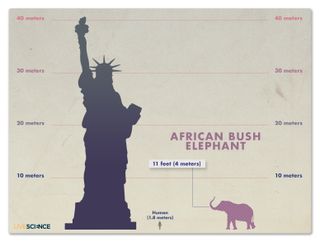
African bush elephant (Loxodonta africana): Stands an average of 11 feet (4 meters) at the shoulder, measures 20 to 25 feet (6.1 to 7.6 m) in length and weighs about 12,000 pounds (5,443 kilograms). It is found across the African continent and is the largest land animal alive today.
Sign up for the Live Science daily newsletter now
Get the world’s most fascinating discoveries delivered straight to your inbox.
Gigantopithecus
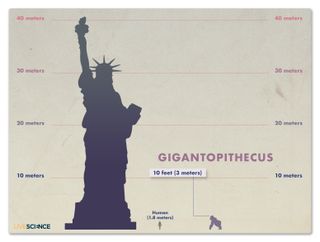
Gigantopithecus (Gigantopithecus blacki): 10 feet (3 meters) tall, weighed up to 595 pounds (270kilograms). The largest known primate, gigantopithecus was native to southeast Asia for about 1 million years, went extinct about 100,000 years ago. [Read more about why King Kong towers over today's beasts]

Mindy Weisberger is an editor at Scholastic and a former Live Science channel editor and senior writer. She has reported on general science, covering climate change, paleontology, biology, and space. Mindy studied film at Columbia University; prior to Live Science she produced, wrote and directed media for the American Museum of Natural History in New York City. Her videos about dinosaurs, astrophysics, biodiversity and evolution appear in museums and science centers worldwide, earning awards such as the CINE Golden Eagle and the Communicator Award of Excellence. Her writing has also appeared in Scientific American, The Washington Post and How It Works Magazine.
Most Popular

